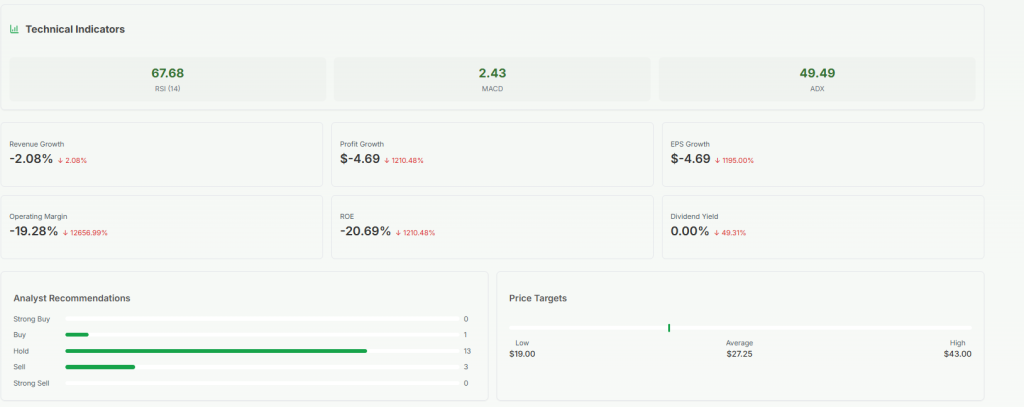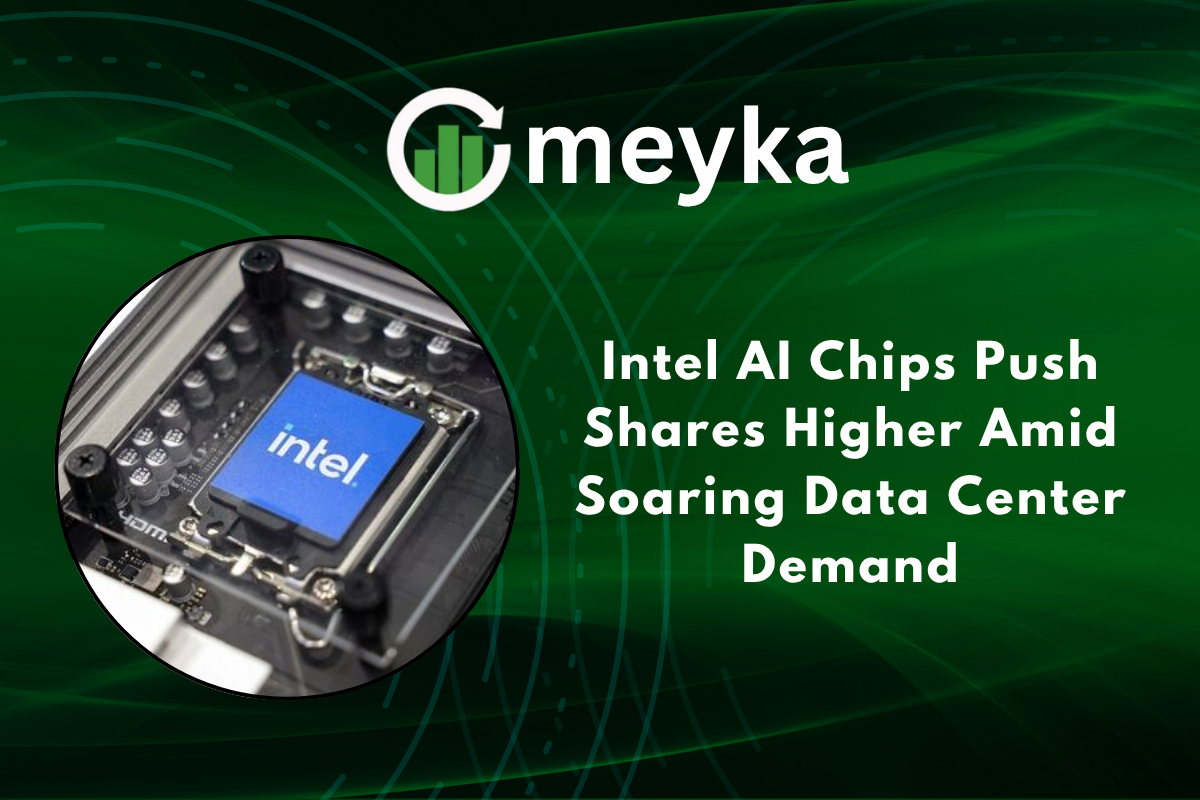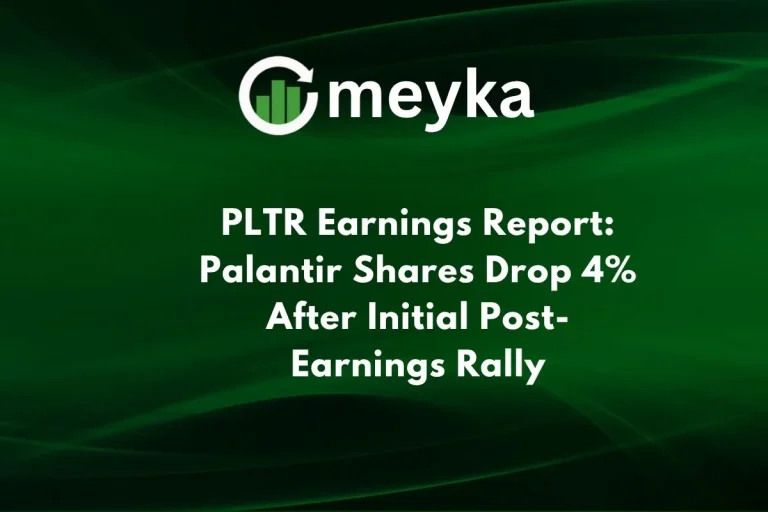Intel AI Chips Push Shares Higher Amid Soaring Data Center Demand
Intel’s shares surged nearly 9% after the chipmaker posted better-than-expected quarterly results. The beat was driven by booming demand for Intel AI Chips and clear cost cuts. The company also signaled stronger data-center momentum.
Why are investors suddenly so bullish on Intel? The answer mixes AI hardware wins, margin gains, and renewed investor faith. Reporting from Reuters and Bloomberg shows markets quickly priced in a faster turnaround and higher expectations for Intel’s AI roadmap.
Intel AI Chips Lead a Remarkable Turnaround
Intel’s (INTC) latest quarter showed that the Data Center and AI business is a growing center of gravity. Intel AI Chips are now a central pillar of the company’s revival. The quarter beat came as data-center customers upgraded servers to run heavy AI workloads. Reuters says Intel surpassed profit estimates after strong demand and cost moves.
Intel (INTC) is pitching Gaudi AI accelerators alongside its Xeon family. These chips target training and inference at scale. Intel’s product push puts it squarely in competition with Nvidia and AMD in data-center AI.
For product details and availability, Intel’s own release and coverage show Gaudi 3 and Xeon advances are in market rollouts.
A wave of positive investor reaction followed the print. A quick investor note that circulated on X highlighted the upbeat sentiment after the earnings beat.
Data Center Boom Fuels Intel’s Revenue Growth

Global investment in data centers remains very strong. Companies are building capacity to host large language models and other AI services.
That trend helps Intel sell more server CPUs and accelerators. Reuters and other industry trackers report record data-center builds and higher AI infrastructure spend.
Intel’s DCAI unit delivered meaningful revenue and margin improvement in the quarter. Public filings and market summaries put DCAI revenue at about $4.1 billion, with noticeable margin gains. This helped overall revenue top expectations.
Why are data centers so important for Intel’s growth? Because AI models need lots of compute. Data centers buy server CPUs and accelerators in volume. Intel has long ties to hyperscalers and enterprises. That gives it a steady channel for AI data center growth.
Recent AI Stock research suggests investors favor chipmakers with concrete AI product traction. Firms that show real AI deployments get stronger investor sentiment and better revenue visibility.
A short investor tweet amplified this mood, showing retail and institutional interest around Intel’s AI story.
Cost Cuts and Efficiency Drive Intel’s Comeback
Intel combined product progress with a hard line on costs. The company trimmed operating expenses and streamlined operations. Those moves lifted margins and converted revenue growth into profit. Business Times and Reuters note that cost reduction plus investments helped the surprise beat.
The company has reduced overhead, paused some projects, and reshaped capital plans. That made Wall Street take the numbers more seriously. Investors now see a leaner Intel that can fund AI R&D while improving cash flow.
Will Intel’s cost strategy sustain its growth? Most analysts say yes, if AI demand keeps rising and execution stays steady. Efficiency buys time for Intel to scale AI silicon and foundry partnerships.
Intel’s Position in the Global AI Chip Race
Competition remains fierce. Nvidia, AMD, and Qualcomm are all racing to supply the AI stack. Intel’s (INTC) play differs. It aims to integrate AI features into CPUs and offer discrete accelerators for data centers. Bloomberg’s analysis says Intel’s earnings surprise and product roadmap have sharpened its competitive profile.
Intel (INTC) is expanding Gaudi availability with OEM partners. The company plans broader rollouts and ecosystem support for the next year. That gives hyperscalers more choice beyond GPU-only stacks. According to independent AI Stock Analysis, this combination of silicon and integrations helped lift investor appetite for Intel.
How Intel’s Strategy Differs from Its Rivals
Intel focuses on AI integration at the silicon level. That means building CPUs that handle AI workloads better. Nvidia (NVDA) leaned into GPUs and software stacks. Intel bets on a mixed approach: AI-enabled CPUs, custom server chips, and accelerators. This hybrid strategy appeals to cloud providers that want flexible, cost-efficient infrastructure.
Partners like AWS, Microsoft Azure, and Google Cloud matter a lot for scale. Analysts say Intel’s supply and integration capabilities are real advantages, but execution will decide the outcome.
Can Intel truly challenge Nvidia’s dominance? Analysts answer: Maybe. Intel has scale and partners. But it must keep shipping competitive silicon and timing launches tightly.
Investor Reactions and Market Sentiment
After the earnings release, Intel’s stock jumped in premarket and after-hours trading. The move reflected relief and renewed optimism among investors and analysts. Several Wall Street notes pointed to the AI momentum and cost discipline as reasons to lift targets. Yahoo Finance, Reuters, and Bloomberg reported the market moves and analyst comments.
Investors tracking broader AI Stock trends are watching Intel as a bellwether for the sector. If Intel keeps delivering, other semiconductor names could follow. This makes Intel’s results a sector signal, not only a single-stock story.
Challenges Intel Still Faces in Its AI Journey
Risks remain. Supply-chain stress, tight foundry yields, and chip delays could slow progress. Nvidia’s Blackwell series and AMD’s MI300 line remain strong competitors. Also, global chip demand is uneven outside data centers. Geopolitics and manufacturing execution still test Intel’s comeback.
What could slow Intel’s momentum? Delays in manufacturing scale and weak consumer demand pose real threats.
The Road Ahead for Intel AI Chips
To sum up: Intel AI Chips helped turn a quarter into a clear vote of confidence. The mix of stronger data-center demand, product launches, and cost cuts restored investor trust. If Intel keeps shipping competitive accelerators and CPUs, it can regain share in AI infrastructure.
As the age of AI accelerates, Intel’s innovation and scale could shape future data-center design. The company still faces work, but the quarter shows a real step forward.
FAQ’S
Intel stock is rising due to strong Q3 earnings, strategic partnerships, and cost-cutting measures that improved profitability.
Intel is developing AI-focused GPUs like Crescent Island and collaborating with AWS and Microsoft to produce custom AI chips.
AI adoption boosts demand for semiconductors and tech infrastructure, positively influencing stocks in the sector.
No credible reports suggest Elon Musk is planning to acquire Intel at this time.
Disclaimer
The content shared by Meyka AI PTY LTD is solely for research and informational purposes. Meyka is not a financial advisory service, and the information provided should not be considered investment or trading advice.






